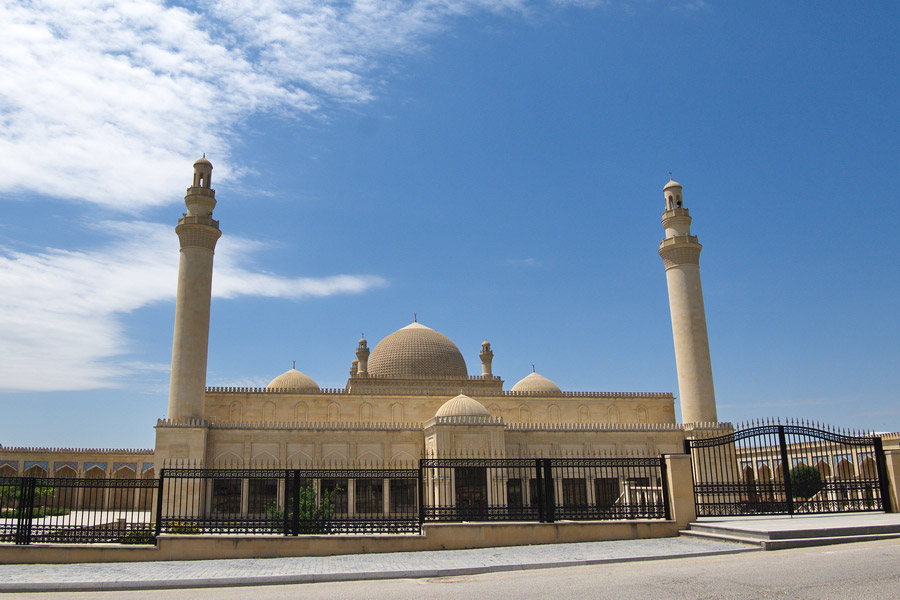Azerbaijan and the Silk Road

Azerbaijan - between mysterious China and rich Europe.
From time immemorial the caravan routes of the Silk Road invariably crossed Azerbaijan. It served as the "gate" between mysterious faraway China and rich Europe.
In the 1st – 2nd centuries BC the busiest way laid across the Country of Lights. The way was usually called "Strabon" (after the great geographer who was the first to mention it). The way started from China and India across Central Asia, crosses the river of Uzbai flowing into the Caspian Sea and went across the territory of Azerbaijan. There it split in two roads: one led upstream the Kura towards Colchis and Iberia, the second made a turn and went along the western coast of the Caspian Sea across Derbent and Caucasian steppes.

Azerbaijan was the safest of the entire Road. Georgia, Iberia, Colchis, which followed after, were politically stable states which could provide the functioning of the route which in turn attracted merchants. Another attraction was the fact that the most of the way included transportation by water which used to be the cheapest. As a result that section was durable, stable and intensive as well as one of the major destinations of the Silk Road in antiquity.
It was there, along the two branches of “Strabon way”, where numerous ancient cities of Azerbaijan were founded. During early Middle Ages Azerbaijan still remained the important center of the Silk Road. Barda, which became the capital of Azerbaijan in the 5th century, was considered the world’s greatest trading center on one of branches of the Silk Road and until the 10th century was one of the greatest centers of crafts of the entire Middle East and Transcaucasia.

Talented handicraftsmen offered foreign merchants a great variety of useful goods - graceful jewelry, wind and string musical instruments, expensive weaponry, magnificent carpets, local sorts of silk. The merchants took to Europe oil, jewelry, salt, mercury, alum, wool, flax, cotton, mineral dyes, medicines and many other things out from there. Copper items were especially famous: kitchen ware, trays, candlesticks, astronomical devices.
Many centuries after, Islam was adopted as the official religion of the country. Medieval Azerbaijan continued to maintain trade relations and exchanged its cultural values with many countries. In the 14th – 18th centuries the role of Azerbaijan cities located on the Silk Road increased even more. It happened due to the development of the Volga-Caspian Sea waterway used by Russian and English merchants. During that period such cities as Shemakha, Derbent, Baku, Ardabil, Tabriz, Maragheh, Ganja, and Nakhichevan become the transportation centers with warehouses for goods from Orient and Europe. It was there that the merchants from Russia, Europe, Turkey, Central Asia and Far East gathered.

Caravanserais were built in all major cities. The local governors were paid lot of money so that they issue permission to build small monasteries, prayer and guest houses I the temples where caravans stopped.

